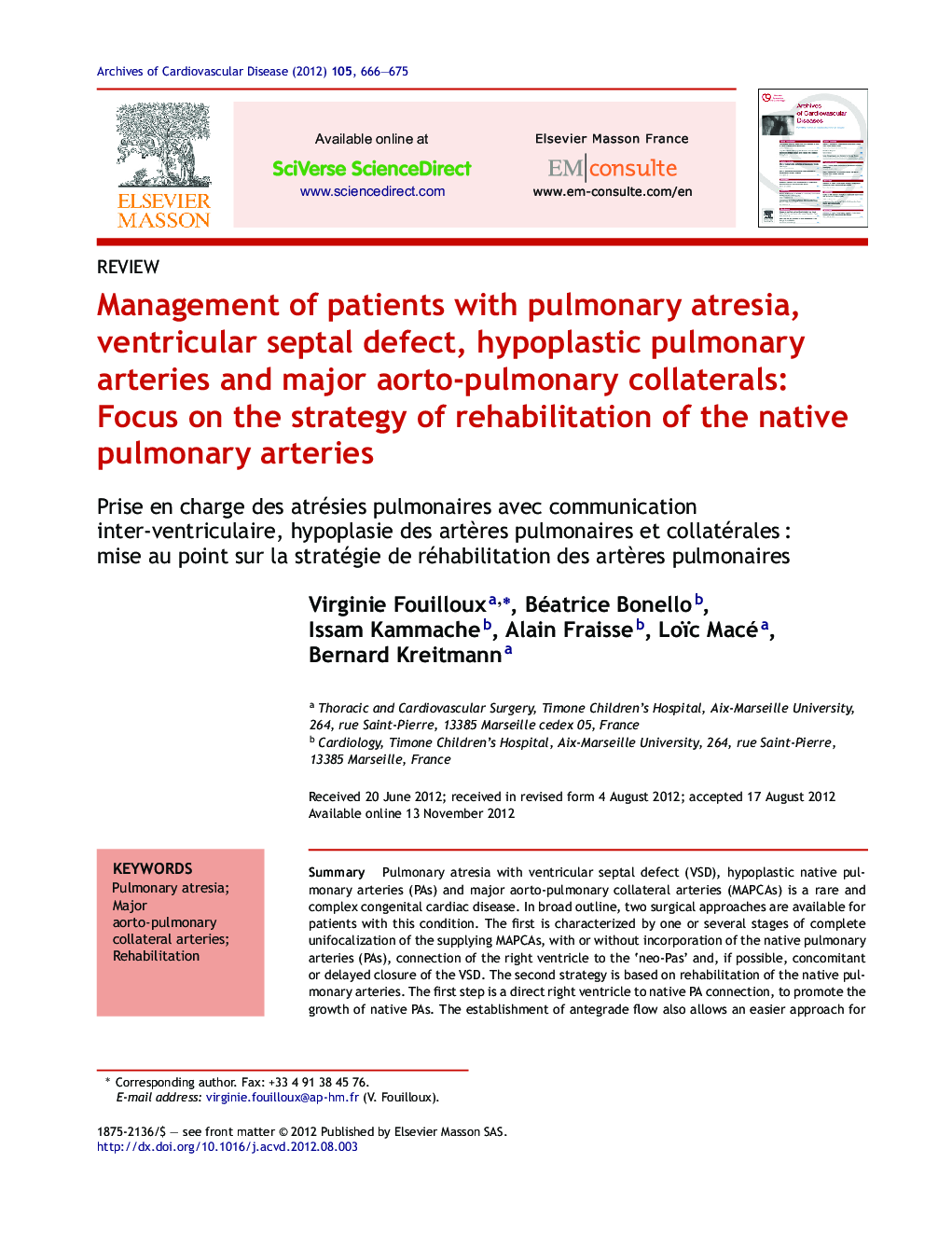| کد مقاله | کد نشریه | سال انتشار | مقاله انگلیسی | نسخه تمام متن |
|---|---|---|---|---|
| 2889449 | 1574369 | 2012 | 10 صفحه PDF | دانلود رایگان |

SummaryPulmonary atresia with ventricular septal defect (VSD), hypoplastic native pulmonary arteries (PAs) and major aorto-pulmonary collateral arteries (MAPCAs) is a rare and complex congenital cardiac disease. In broad outline, two surgical approaches are available for patients with this condition. The first is characterized by one or several stages of complete unifocalization of the supplying MAPCAs, with or without incorporation of the native pulmonary arteries (PAs), connection of the right ventricle to the ‘neo-Pas’ and, if possible, concomitant or delayed closure of the VSD. The second strategy is based on rehabilitation of the native pulmonary arteries. The first step is a direct right ventricle to native PA connection, to promote the growth of native PAs. The establishment of antegrade flow also allows an easier approach for interventional catheterization, enabling dilatation or stenting of the stenosis and then closure of the communicant collaterals. When the development of the native PAs is satisfactory, the complete repair is performed. If it is necessary to suture a MAPCA to the PA (‘unifocalization’), this is accomplished by connecting the collateral artery to an already developed native branch. Our team developed this multidisciplinary strategy with good results. Based on this experience as well as on the published literature, we describe this strategy of management of patients with pulmonary atresia, VSD, hypoplastic pulmonary arteries and major aorto-pulmonary collaterals (MAPCAs).
RésuméL’atrésie pulmonaire avec communication inter-ventriculairev (CIV), hypoplasie des artères pulmonaires natives et collatérales est une cardiopathie congénitale rare et complexe. Il existe schématiquement deux approches chirurgicales différentes. L’une est représentée par une chirurgie d’unifocalisation des collatérales, incorporant ou non les artères pulmonaires natives, la connexion du ventricule droit aux « néo » artères pulmonaires et si possible dans le même temps, la fermeture de la CIV. La seconde stratégie est basée sur la réhabilitation des artères pulmonaires natives. La première étape consiste en une ouverture de la voie ventricule droit – artère pulmonaire, dans le but de promouvoir la croissance des artères pulmonaires natives. L’établissement d’un flux antérograde rend ainsi les APs accessibles aux procédures de cathétérisme interventionnel. Lorsque le développement des APs natives est satisfaisant, la réparation complète peut être réalisées, avec unifocalisation des collatérales et fermeture de la CIV. Notre équipe développe cette stratégie multi-disciplinaire avec de bons résultats. À partir de cette expérience et de celle retrouvée dans la littérature, nous proposons une description et une mise au point de la stratégie de réhabilitation des artères pulmonaires dans la prise en charge des patients avec atrésie pulmonaire, hypoplasie des artères pulmonaires, CIV et collatérales.
Journal: Archives of Cardiovascular Diseases - Volume 105, Issue 12, December 2012, Pages 666–675